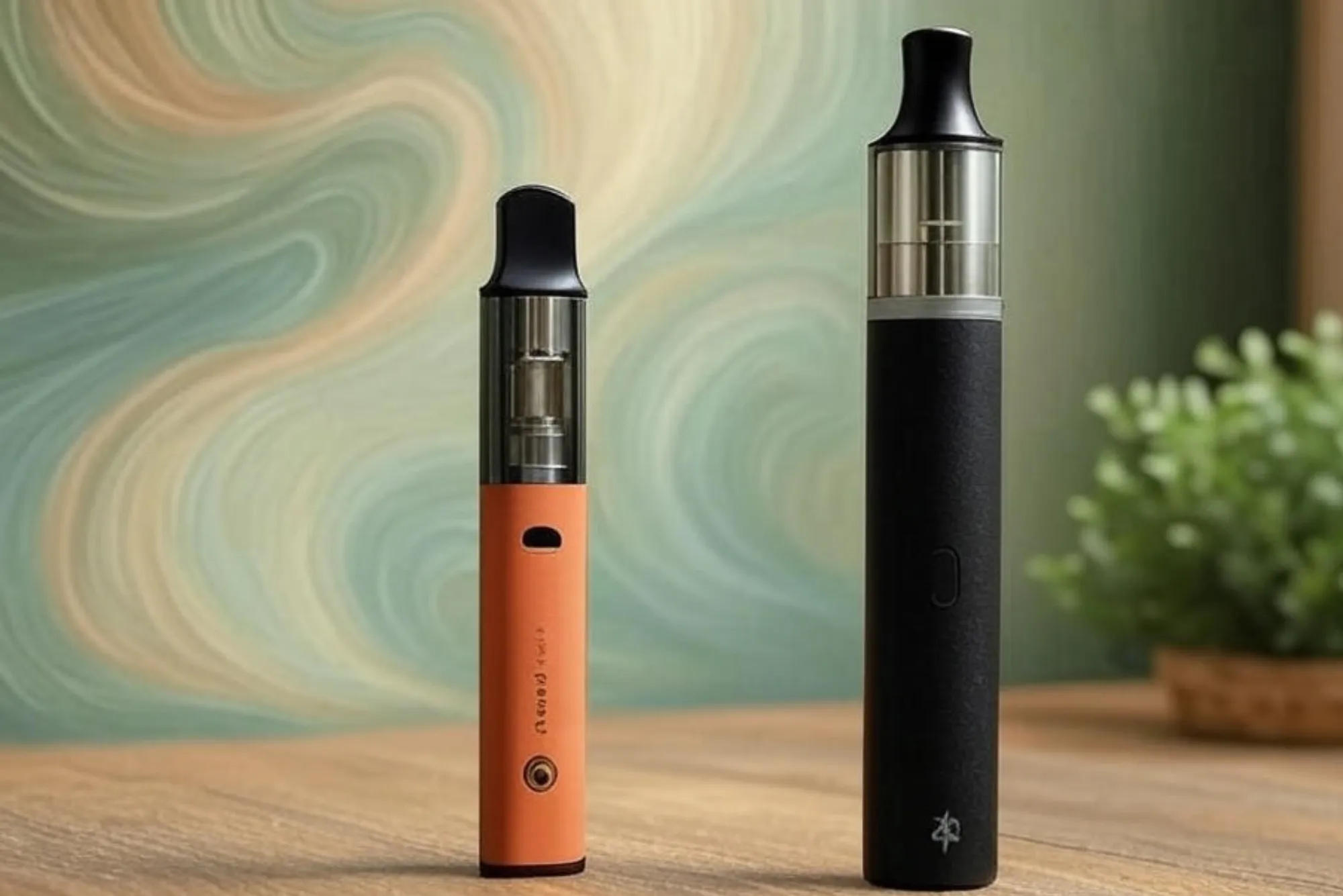The Benefits of Vaping for Smoking Cessation
For millions of smokers around the world, quitting is easier said than done. Despite the well-known health risks, nicotine addiction is a powerful force that can make even the most determined person struggle. Over the past decade, vaping has emerged as an alternative method to help people quit smoking. While not without controversy, the use of e-cigarettes for smoking cessation has gained recognition from health experts and institutions. In this article, we’ll explore the real benefits of using vaping to quit smoking, how it compares to traditional nicotine replacement therapies, and why it might be the right choice for you.
Why Quitting Smoking Is So Challenging
Smoking is not just a bad habit—it’s a complex addiction involving both physical and psychological components. Nicotine, the addictive substance in tobacco, affects the brain’s reward system, creating a cycle of craving and withdrawal. In addition to this physical dependency, many smokers associate smoking with daily routines, stress relief, or social interactions. This dual-layered addiction makes quitting cigarettes one of the hardest things to do without assistance.
How Vaping Supports Smoking Cessation
Nicotine Delivery Without Combustion
One of the biggest advantages of vaping is that it provides a way to deliver nicotine without burning tobacco. When tobacco burns, it produces tar and thousands of harmful chemicals, many of which are carcinogenic. E-cigarettes, on the other hand, heat a liquid (usually containing nicotine, flavoring, and other ingredients) into an aerosol. This means you can satisfy your nicotine cravings without exposing your lungs to toxic smoke.
Gradual Nicotine Reduction
Many vaping products come with varying levels of nicotine, allowing users to gradually reduce their intake over time. This tapering method can be effective for smokers who find it difficult to quit cold turkey. Instead of going through intense withdrawal, users can step down their nicotine levels week by week until they no longer need it.
Mimicking the Smoking Ritual
For many smokers, the hand-to-mouth action of smoking is just as addictive as the nicotine itself. Vaping mimics this behavior, which can make the transition easier for some people. The familiar motions and sensations can reduce the psychological barrier to quitting cigarettes, making it feel like less of a drastic change.
Fewer Withdrawal Symptoms
Traditional methods like nicotine patches or gum often fail because they don’t satisfy all aspects of the addiction. Vaping addresses both the physical and behavioral aspects of smoking, which can lead to fewer withdrawal symptoms. Users report lower levels of irritability, anxiety, and cravings compared to quitting without aid.
Health Benefits of Switching to Vaping
Reduction in Toxic Chemical Exposure
Numerous studies have shown that vaping exposes users to far fewer harmful chemicals than smoking. Public Health England, for example, concluded that vaping is at least 95% less harmful than smoking. While vaping is not completely risk-free, the reduction in exposure to carcinogens and toxins is significant.
Improved Lung Function Over Time
Many smokers who switch to vaping report improved breathing, reduced coughing, and increased energy levels within weeks. While long-term data is still being collected, early evidence suggests that quitting smoking through vaping allows the lungs to begin healing, which can improve respiratory health and reduce the risk of chronic obstructive pulmonary disease (COPD).
Lower Risk of Cardiovascular Disease
Smoking is a major risk factor for heart disease, heart attacks, and stroke. Reducing or eliminating tobacco smoke from your life can significantly improve cardiovascular health. Vaping to quit smoking can lower blood pressure and improve circulation within a relatively short time frame, especially when paired with a healthy lifestyle.
Comparing Vaping With Other Quit Methods
Vaping vs Nicotine Replacement Therapy (NRT)
Traditional NRT options like patches, gums, and lozenges are widely used, but they often fall short in helping long-term smokers quit. These methods deliver nicotine in a steady but often unsatisfying manner, failing to replace the sensory and behavioral components of smoking. Vaping, on the other hand, delivers nicotine more rapidly and closely mimics the act of smoking, which can enhance user satisfaction and quit success rates.
Vaping vs Prescription Medications
Medications like varenicline (Chantix) or bupropion (Zyban) can help reduce cravings and withdrawal symptoms. However, they often come with side effects such as nausea, insomnia, or mood changes. Vaping does not typically cause such side effects and can be used as a stand-alone solution or in combination with other therapies depending on a person’s needs and medical advice.
Vaping vs Cold Turkey
Cold turkey remains one of the least effective ways to quit smoking, with a high relapse rate. This method requires a strong will and usually results in severe withdrawal symptoms. Vaping offers a gentler transition and gives users more control over their quitting process, improving the chances of long-term success.
The Role of Flavors in Smoking Cessation
Flavored e-liquids play an important role in the appeal of vaping for smoking cessation. Many smokers find that switching to flavors like mint, fruit, or dessert helps them move away from the taste of tobacco. Over time, this creates a mental break from their past habit. Some studies suggest that adult users who start with flavored vapes are more likely to quit cigarettes entirely than those who use tobacco-flavored products.
What Health Authorities Say About Vaping to Quit Smoking
Health agencies are beginning to recognize vaping as a legitimate harm-reduction tool. The UK’s National Health Service (NHS) includes vaping in its smoking cessation services and offers guidance for smokers wanting to make the switch. Likewise, Public Health England promotes vaping as a safer alternative to smoking for adults trying to quit. Although some caution remains—especially around youth use and unregulated products—the expert consensus is shifting toward acceptance of vaping as a smoking cessation aid.
Myths and Misconceptions About Vaping
Despite growing support, many myths still surround vaping. One common misconception is that vaping is just as harmful as smoking. However, research clearly shows that the risks are significantly lower. Another myth is that vaping leads to smoking, especially among teens. While youth vaping is a concern, evidence does not support the idea that adult smokers who switch to vaping are likely to return to cigarettes. In fact, many find vaping an effective off-ramp from smoking entirely.
Real-Life Success Stories
Many former smokers credit vaping with giving them the final push they needed to quit. Some tried multiple times with patches, pills, or willpower alone, only to relapse. Switching to vaping allowed them to maintain nicotine intake while gradually letting go of their dependence on cigarettes. Online communities are filled with testimonials from people who have used vaping to quit smoking and regained their health, confidence, and quality of life.
Is Vaping the Right Choice for You?
If you’ve tried to quit smoking before and failed, vaping may offer the support you need. It’s not a magic cure, and it’s not entirely without risks, but it is a far less harmful alternative to smoking tobacco. By using vaping as a tool for smoking cessation, you gain control over your nicotine intake and have a better chance at long-term success.
FAQs
What are the benefits of switching from smoking to vaping?
Switching from smoking to vaping reduces exposure to harmful chemicals, improves lung health, and lowers the risk of heart disease. It also allows gradual nicotine reduction and mimics the act of smoking, making it easier for some people to quit.
Is vaping better than nicotine patches or gum?
Yes, for many users, vaping is more effective than patches or gum because it satisfies both the nicotine craving and the behavioral habit. It delivers nicotine more quickly and offers sensory satisfaction.
Can vaping help me quit smoking completely?
Yes, vaping has helped many people quit smoking entirely. By gradually reducing nicotine levels and breaking the smoking routine, it supports long-term cessation.
Is vaping safe?
While not completely risk-free, vaping is significantly less harmful than smoking. It avoids combustion and reduces exposure to toxic chemicals. However, it should only be used by adult smokers as a cessation tool.
How long should I vape before quitting completely?
That depends on your nicotine dependency. Many users start with a higher nicotine level and taper off over weeks or months. It’s best to have a personalized plan and aim for complete cessation when ready.








